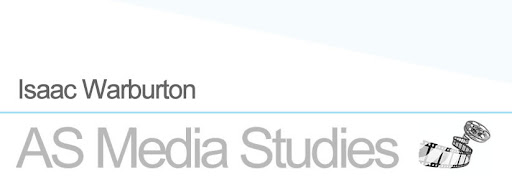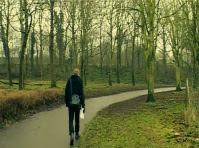In what ways does your media product use, develop or challenge forms and conventions of real media products? (i.e. of film openings)
Dark Clothing
The main actor in the opening sequence is wearing black this fits in well with general conventions of a film to help the audience understand the genre of the film as a horror almost instantaneously. The dull colours also represent the actor’s mood and how the film is going to pan out.
________________________________________________________________________
Poster
The initial poster in the opening scene shows instantly to the viewer what the character in the shot is doing. The missing poster immediately represents the content of the first chapter of the film and should create a level of enigma for the audience. This develops the conventions of an opening sequence as films generally try to let the audience know what the film is about however not as blunt as this.
__________________________________________________________________________
Opening scene
Our opening scene challenges conventional thriller openings which traditionally start with an extreme long shot (establishing shot). We have intentionally decided to use a medium close up of our main character placing a poster up on a lamppost, this is because we have thought about the full story of our movie and this scene ties in with the final reunion at the end of the movie.
__________________________________________________________________________
Establishing shot
Unlike many other films, we have included an establishing shot but this comes after the initial scene. We have used simple techniques such as match on action to sustain the continuity of the film in order not to create confusion for our audience.
__________________________________________________________________________
Extreme close up of eyes
The eyes are the gateway to emotions so we have exploited this by included an extreme close up of our main character. This portrays to the audience that the character is deeply distraught and in thought which is then reinforced by the succeeding flashbacks. The flashbacks tie in with the extreme close up as after the flashback is finished match on action is then also used and our main characters eyes look downwards which shows negative emotions.
__________________________________________________________________________
Black and white
We have used the traditional technique of portraying flash backs to the past by making them black and white, this should instantly make the audience realise that the shot is in the past. This fits with the conventions of not only an opening sequence but mainly the conventions of any film as it is common practice to have 'the past' represented by the black and white colour scheme.
__________________________________________________________________________
Flashbacks
To convey to the audience the relationship between the main character and the missing girl in both scenes (flashback and modern day) we have used different emotions. In modern day scenes which are shown by natural high key lighting, the main character is continuously looking sad and miserable; this contrasts with the portrayed emotions in the flashbacks which consists of mainly smiles and laughter. This ties in with all flashback conventions when looking back on happy times as flashbacks are normally used to recall positive past memories. The flashbacks follow a black and white colour scheme which is often used to represent the past in films.
__________________________________________________________________________
Fire scene
The fire scene fits in with many main conventions in film as it shows the main character losing all hope creating a weak enigma for the audience. The main character is holding a picture of the lost girl while staring longingly into the fire. As he throws the picture in the fire and watches it crinkle up, this coincides with his mindset and he is literally giving up hope and watching her slip away.
__________________________________________________________________________
Streetside
Emotions such as frustration are the main forefront of this scene as he releases all frustration and anger which is shown by the smashing of the bottle. A wide range of emotions are shown in our opening piece which conforms to all opening sequences to maintain the audiences suspension of disbelief.
__________________________________________________________________________
End Scene
The ending scene before the titles shows the young girl cowering in the corner of a room with the anonomous villian standing over her. This scene doesn't challenge the conventions of thrillers as it creates a large amount of enigma for the audience and a chilling cliff hanger. A scene such as this is often found in thriller films.
__________________________________________________________________________
 After filming our preliminary, we learnt how much planning is required for filming, and how much time is wasted when we plan the shots on set rather than preparing before hand. After our preliminary we decided to make sure that every aspect of our final production was planned thoroughly. This would ensure that we did not waste the time that we had with the hire camera, as we only had 2 days. We also learnt about the importance of lighting, and how it can add to the effect of different shots, and also the distractions it can cause. We found especially with the long shot in our preliminary, that the lighting distracted the viewer from the shot of the main character, so we did our best to choose camera angles which helped target this issue. We we also quite lucky as the weather was cloudy which didn't cause many problems with natural lighting and colouring.
After filming our preliminary, we learnt how much planning is required for filming, and how much time is wasted when we plan the shots on set rather than preparing before hand. After our preliminary we decided to make sure that every aspect of our final production was planned thoroughly. This would ensure that we did not waste the time that we had with the hire camera, as we only had 2 days. We also learnt about the importance of lighting, and how it can add to the effect of different shots, and also the distractions it can cause. We found especially with the long shot in our preliminary, that the lighting distracted the viewer from the shot of the main character, so we did our best to choose camera angles which helped target this issue. We we also quite lucky as the weather was cloudy which didn't cause many problems with natural lighting and colouring.
































